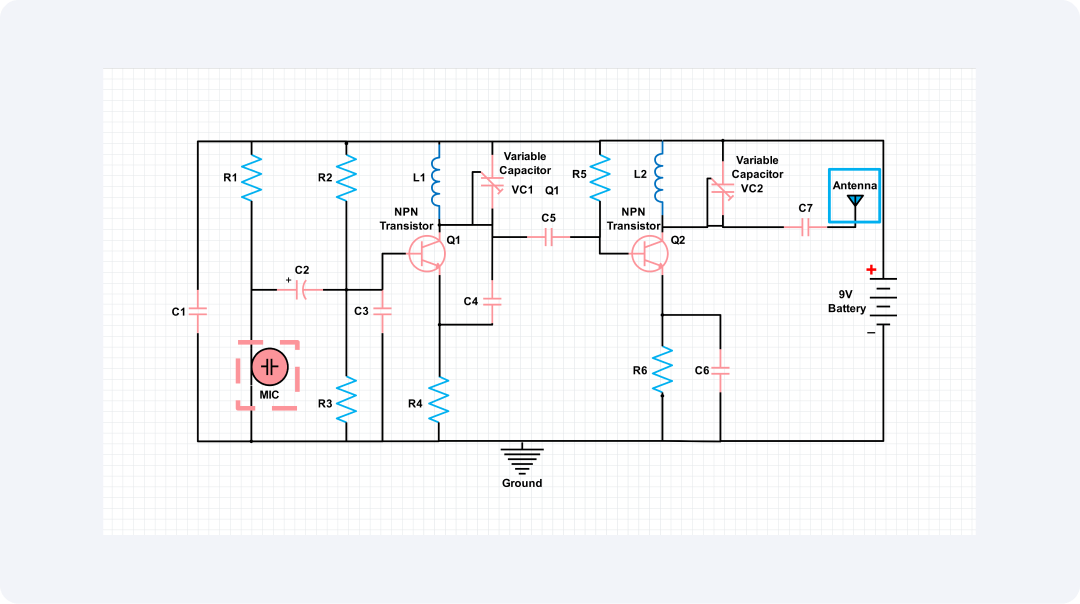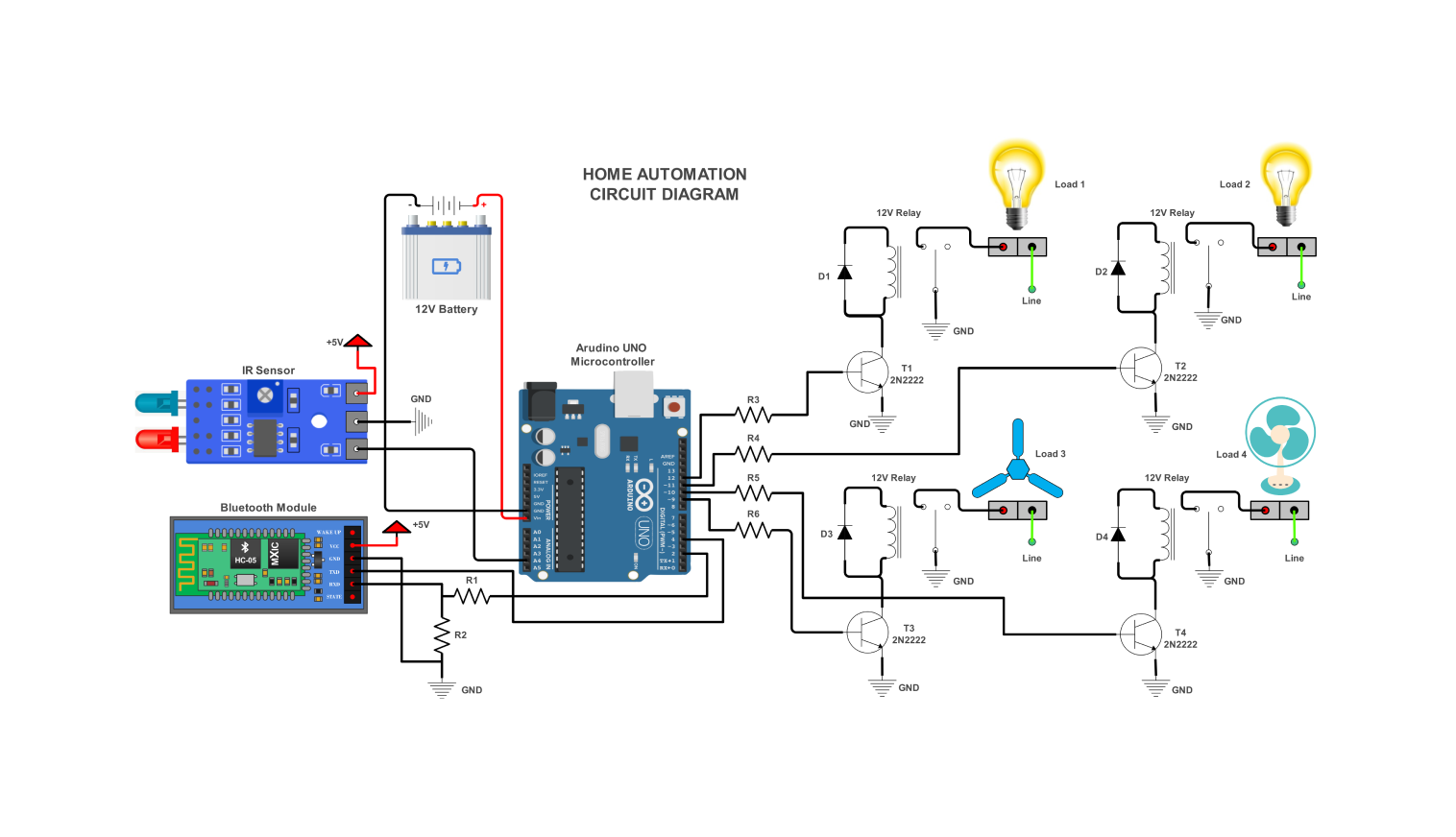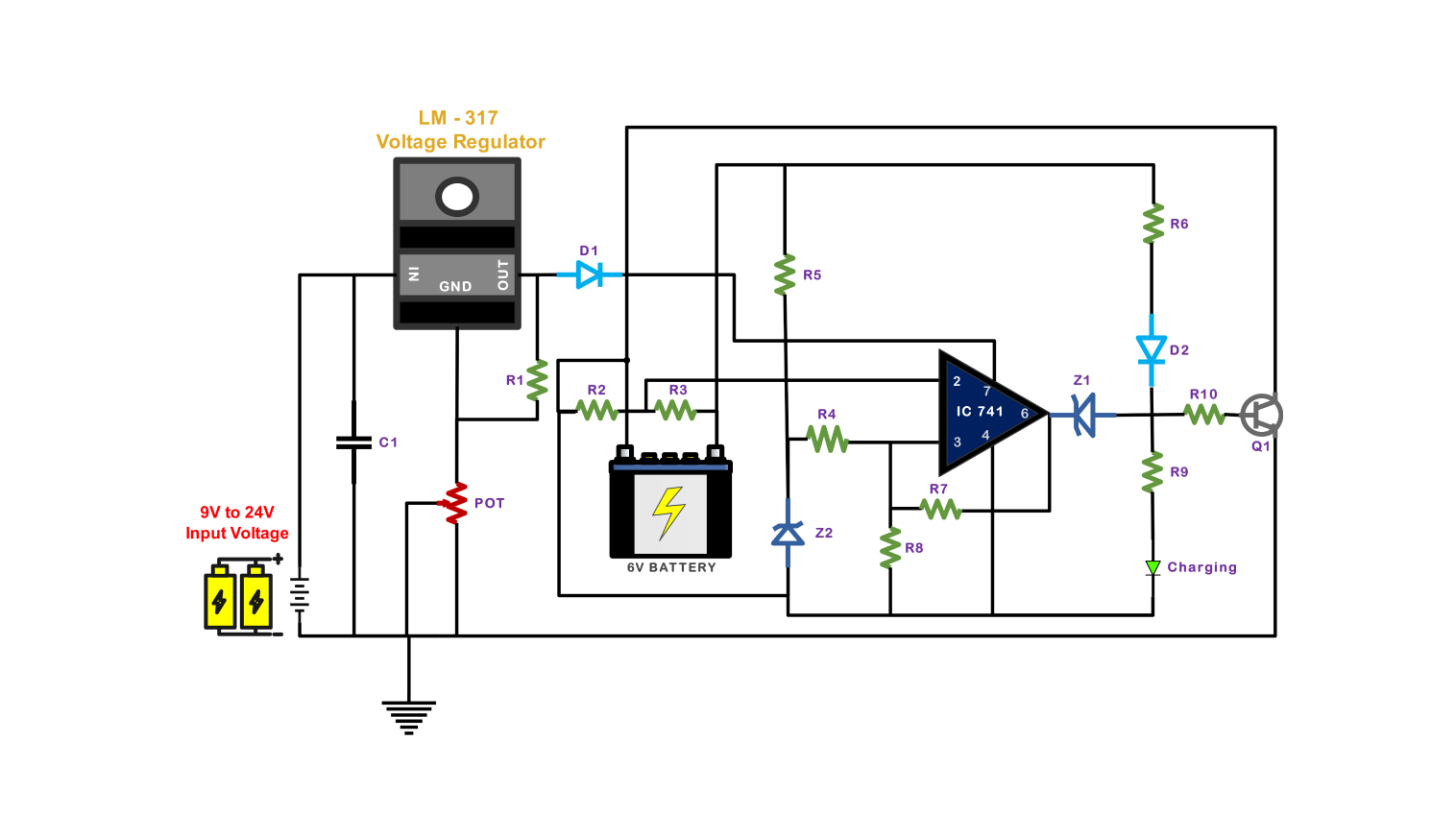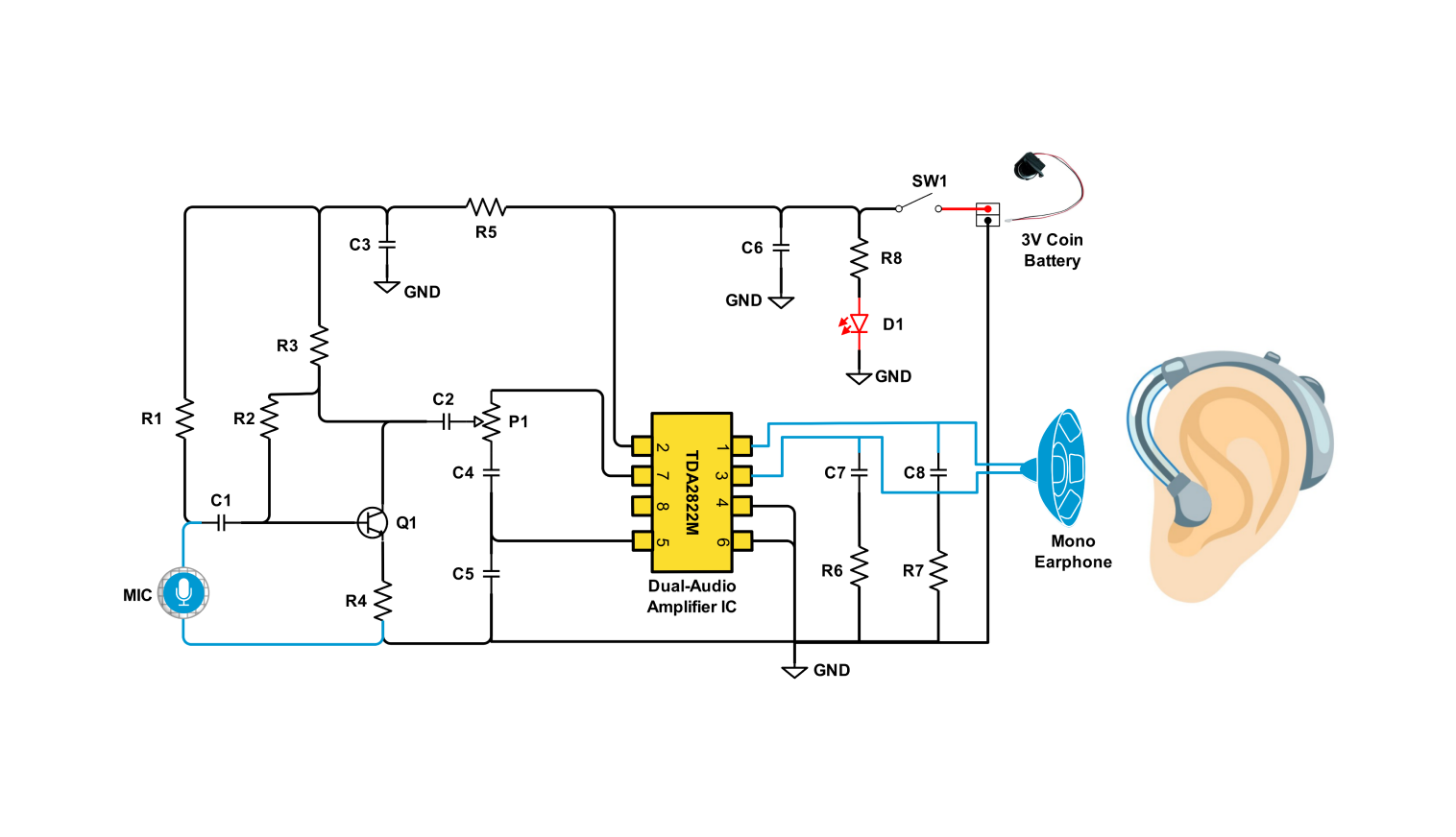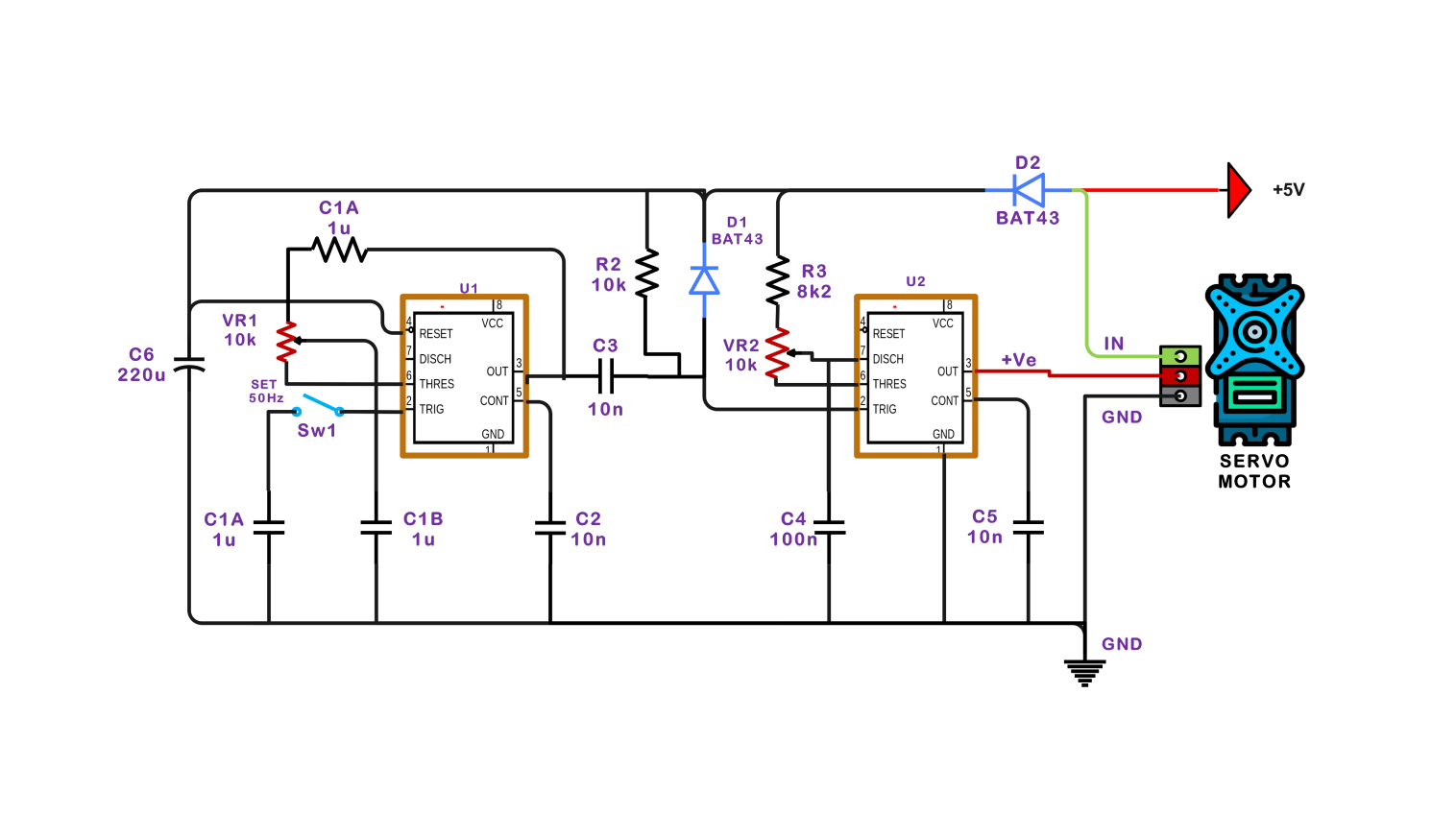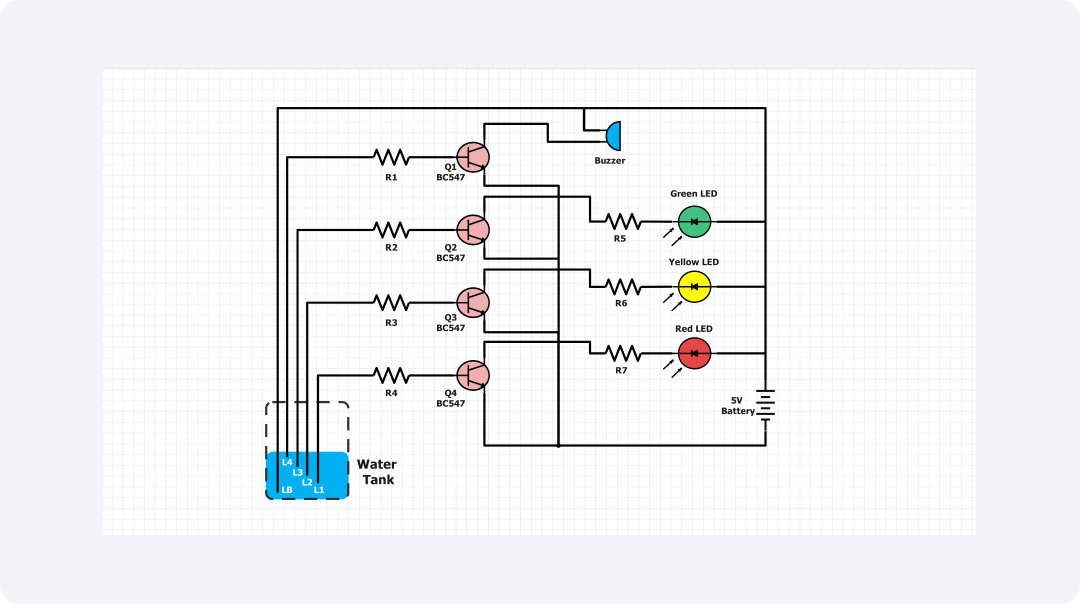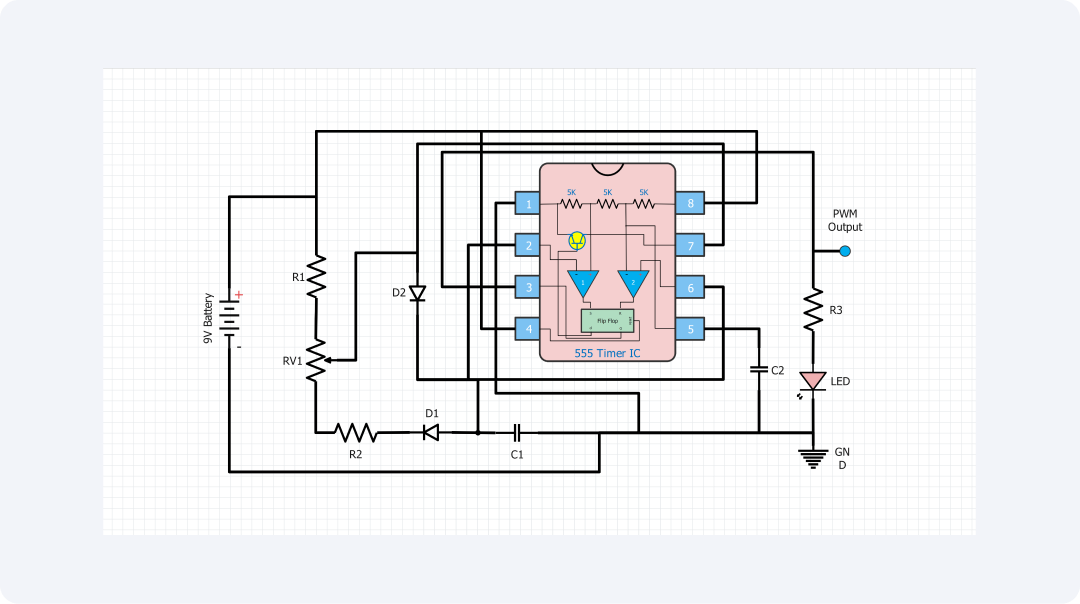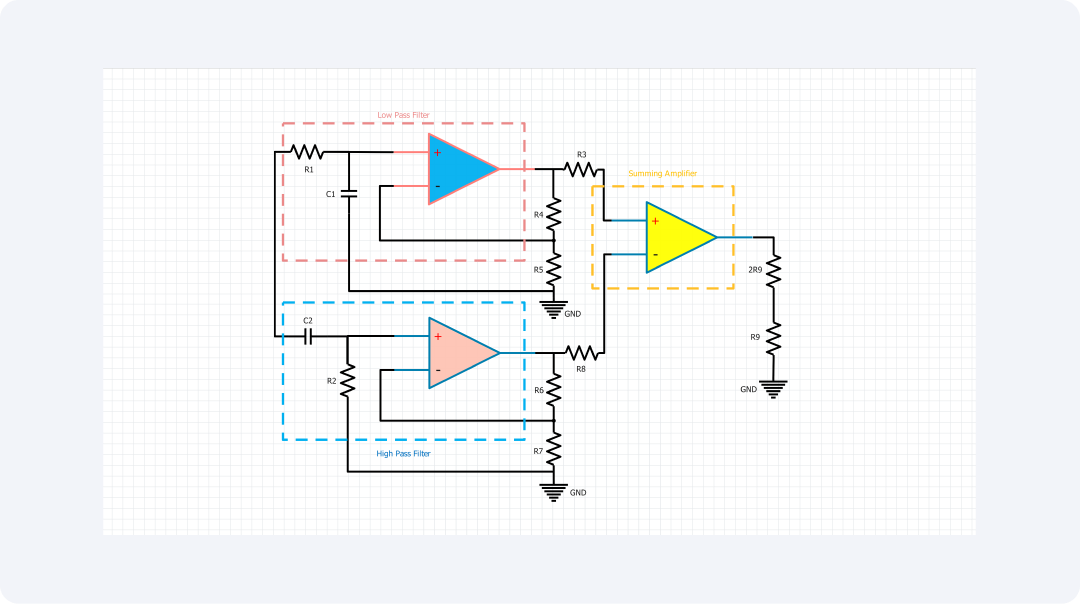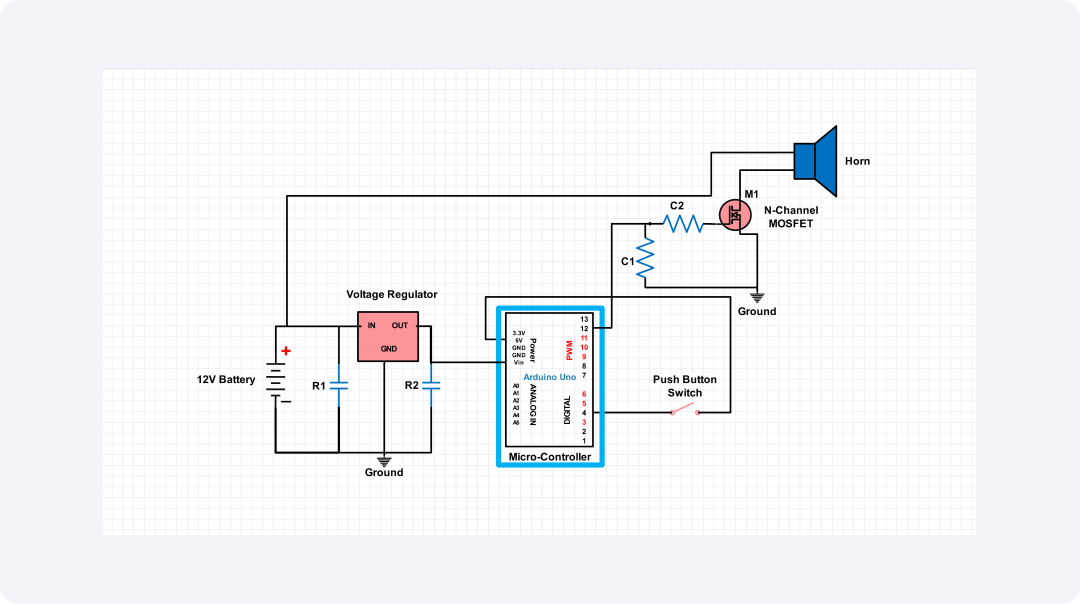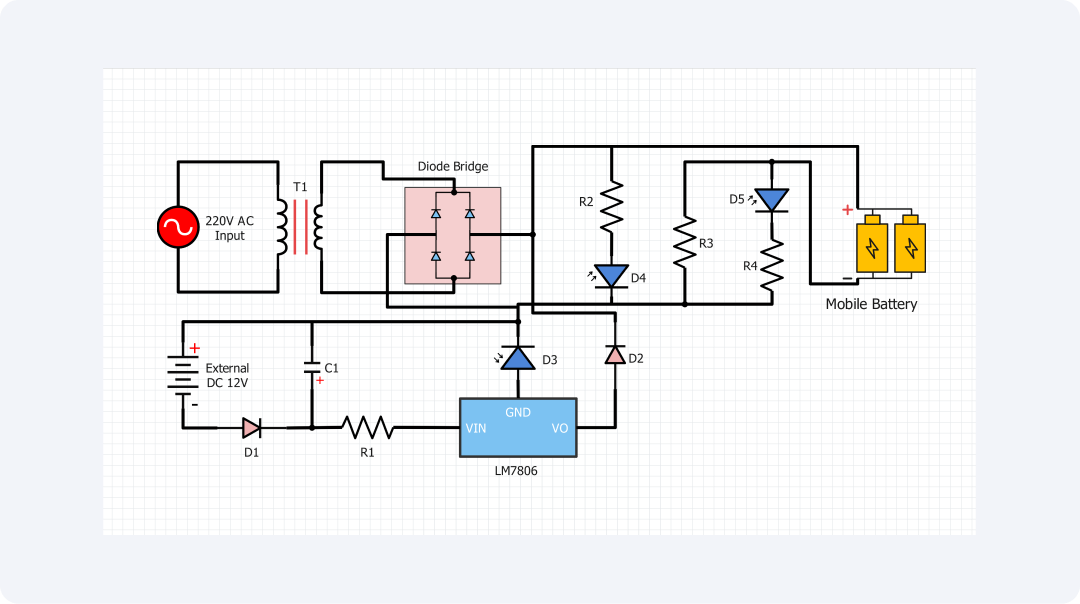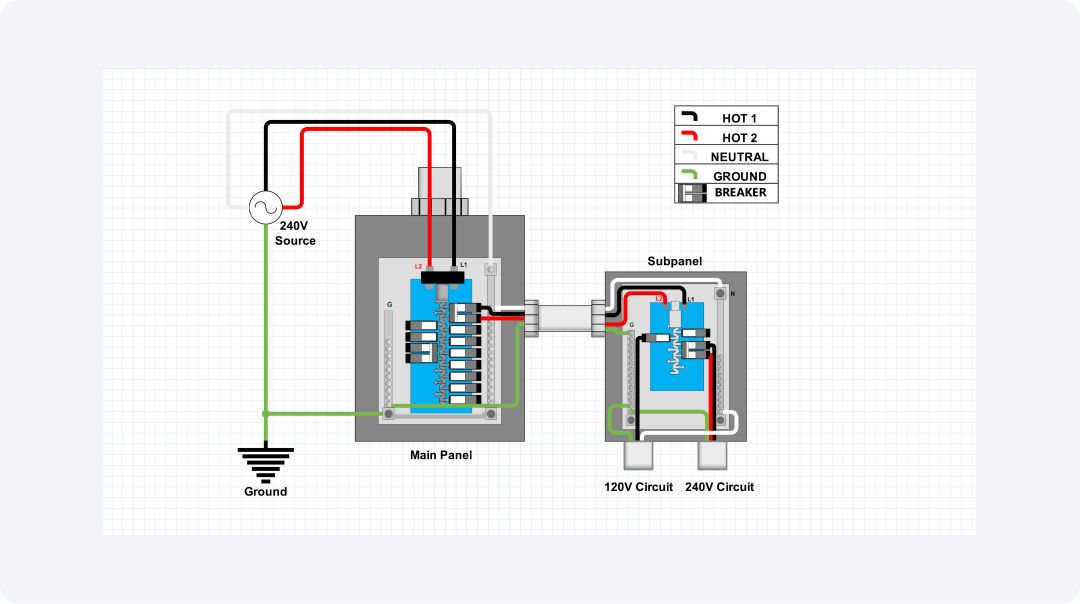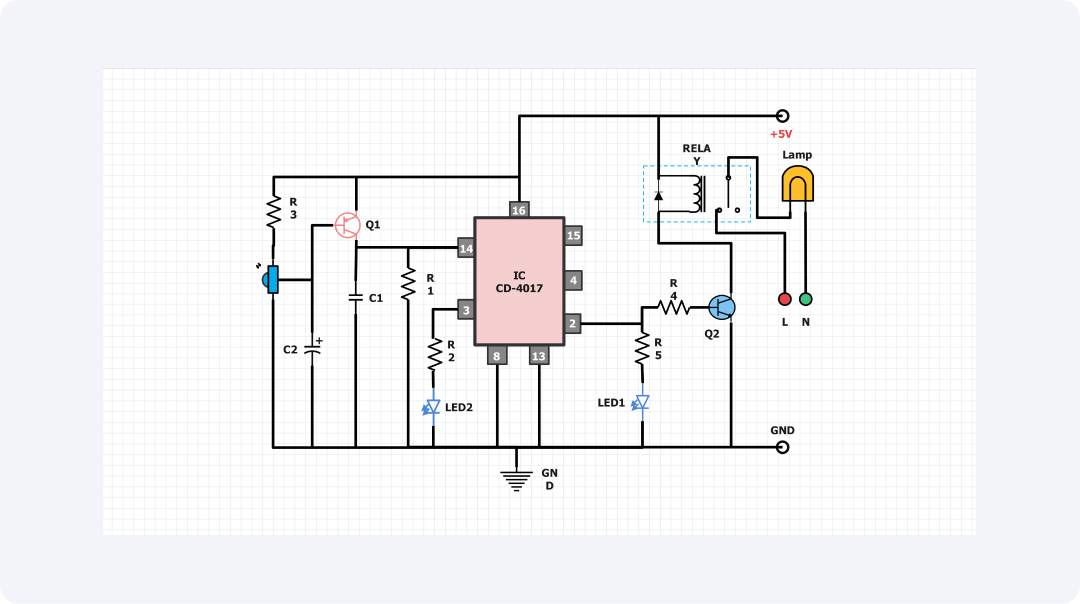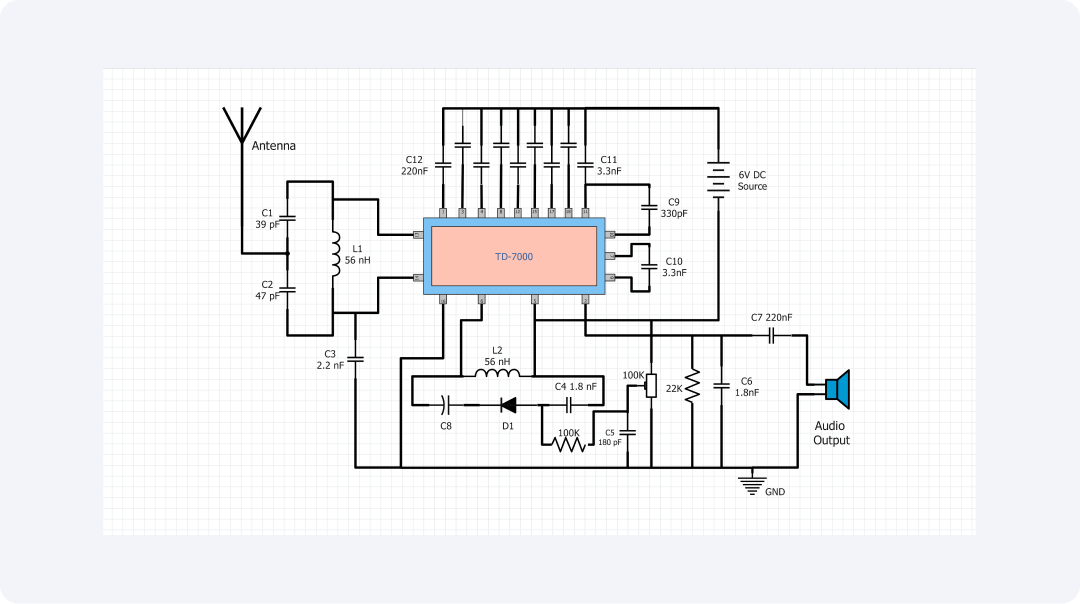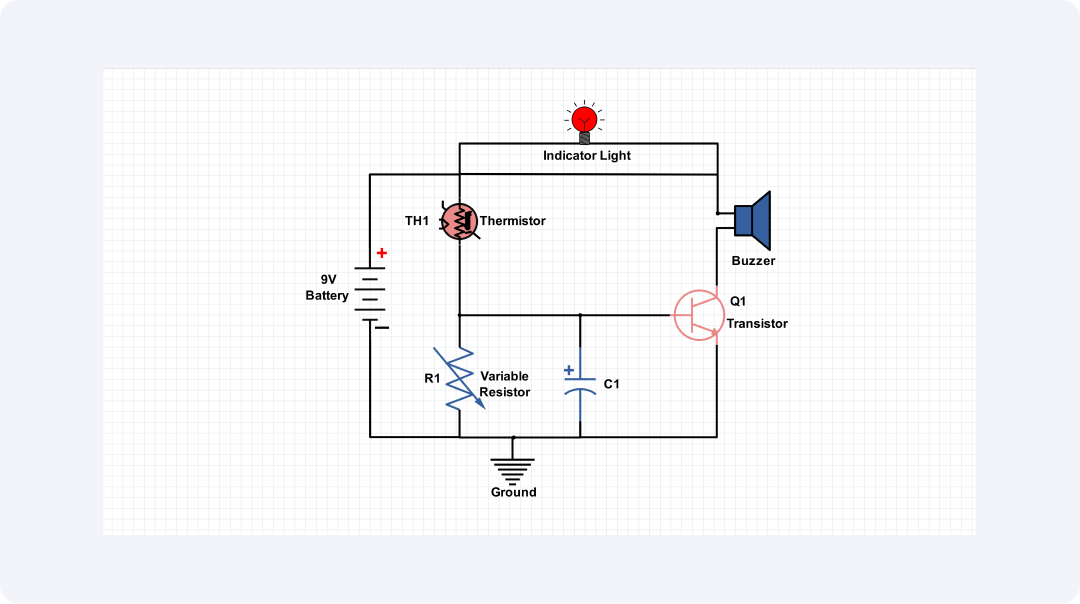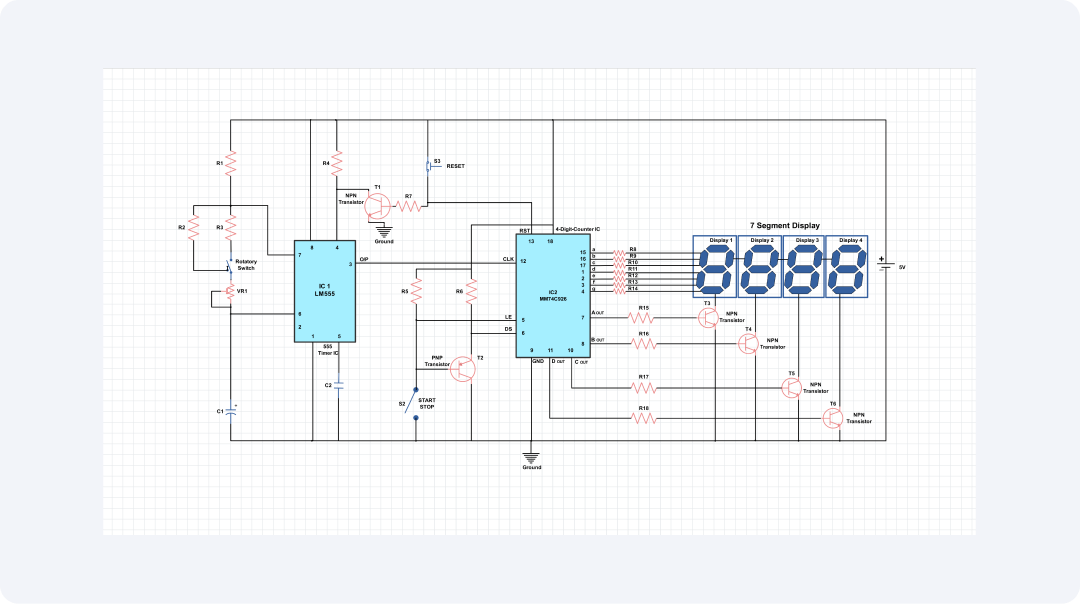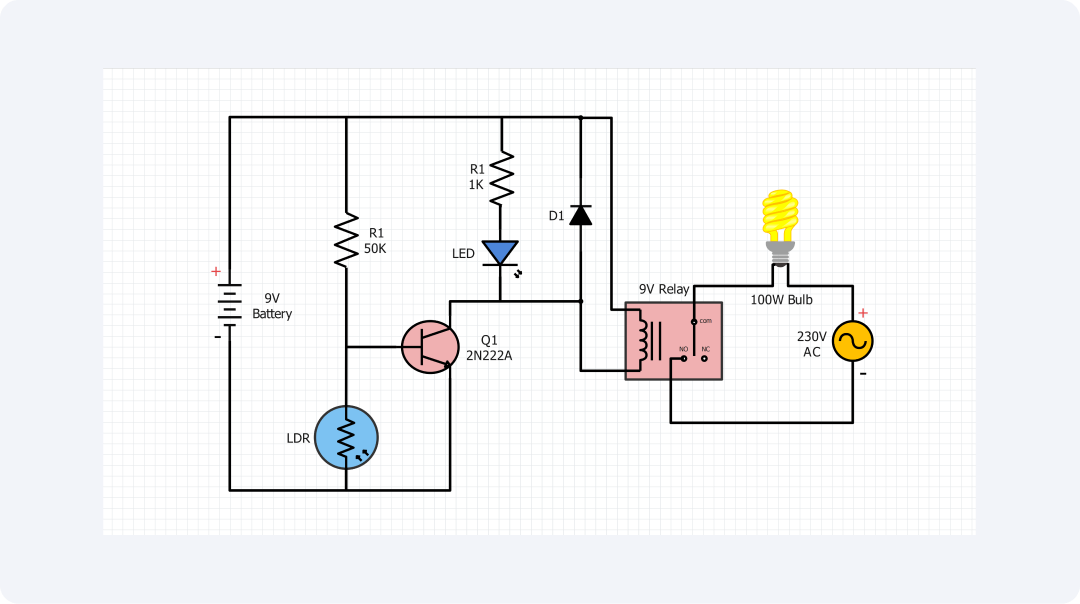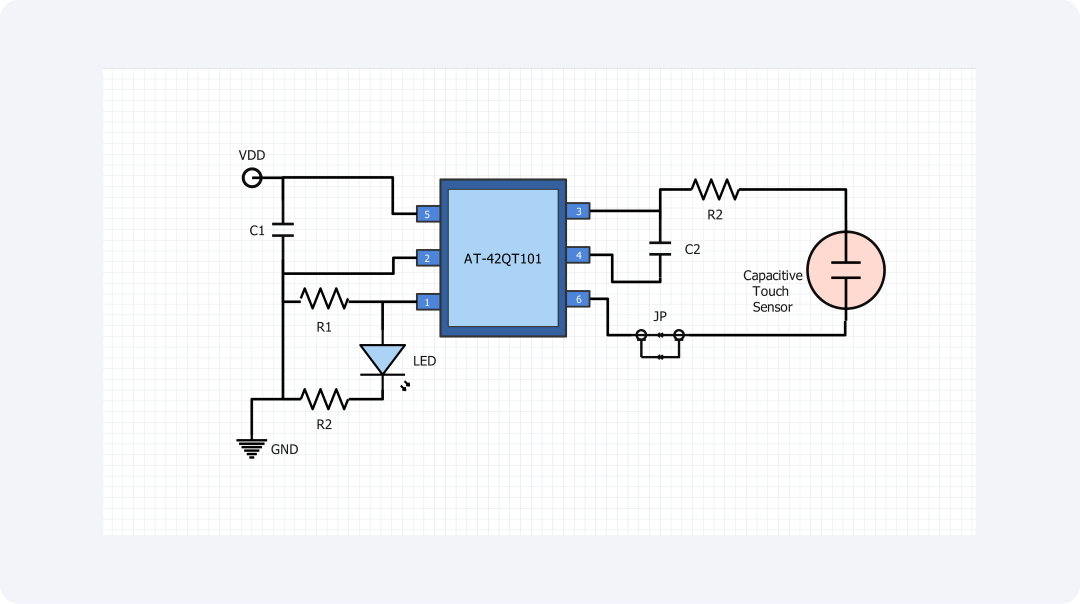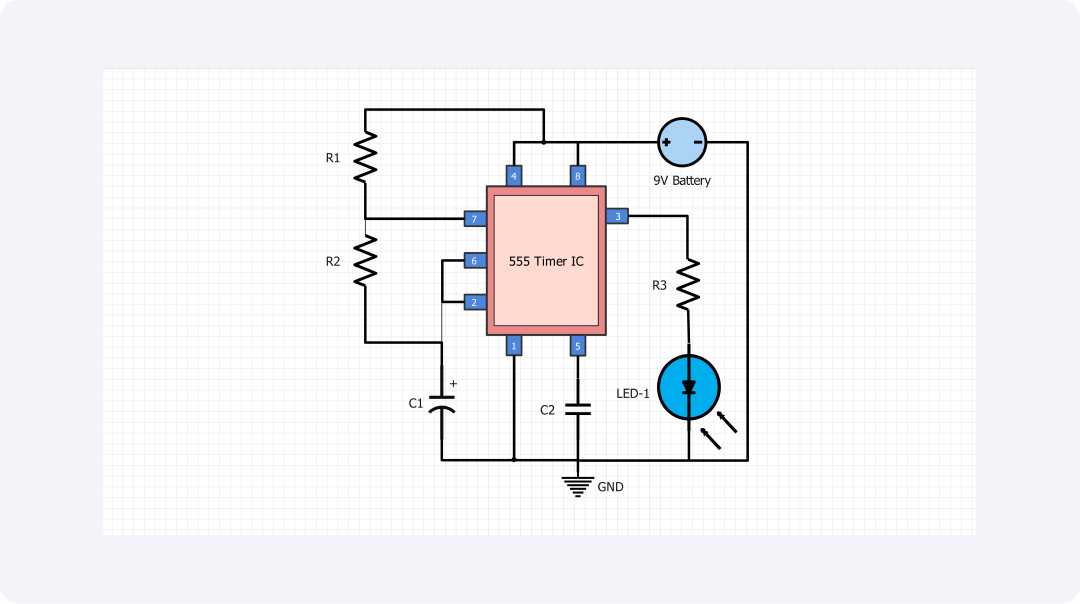- Templates
- Circuit diagram templates
- FM wireless microphone circuit diagram
About this FM wireless microphone circuit diagram
This is an easy circuit for an FM wireless microphone. It can transmit sound using radio frequencies. It consists of a microphone, an audio power amplifier, an FM modulator, and a power supply.
The loudspeaker is the one that receives the audio signal. The audio signal and then burned again by the audio amplifier in an attempt to amplify it. The amplified signal is then input to the FM modulator to change the signal into the FM radio signal. The FM is obtained by using an antenna whereby radio signals are transmitted through the air space.
Typically, the FM modulator may be a Colpitts oscillator circuit. It uses a transistor to develop a carrier wave. There is another way of simply using this audio signal to impress it onto the carrier wave to produce the FM radio signal. The frequency of the carrier wave may be adjusted by changing capacitances and inductances which are present in the circuit in consideration.
An antenna is used for the FM radio signal to be radiated. Therefore, the antenna should be placed in a place where it can establish and develop a straight line of sight towards the receiver.
Therefore, an FM wireless microphone is advantageous in many conditions. For instance, they can be used for the intent of establishing the presence of the business in conferences and other seminars famed by business firms. It can also enrich solutions including entertainment such as the karaoke system or live streaming. In the field of education.
This circuit diagram will help those wanting to learn about FM wireless microphones. It will also aid anyone wishing to build a basic FM wireless microphone. Its various constituents are not very difficult to comprehend, and most of the related elements are rather accessible.
Related templates
Get started with EdrawMax today
Create 210 types of diagrams online for free.
Draw a diagram free Draw a diagram free Draw a diagram free Draw a diagram free Draw a diagram free